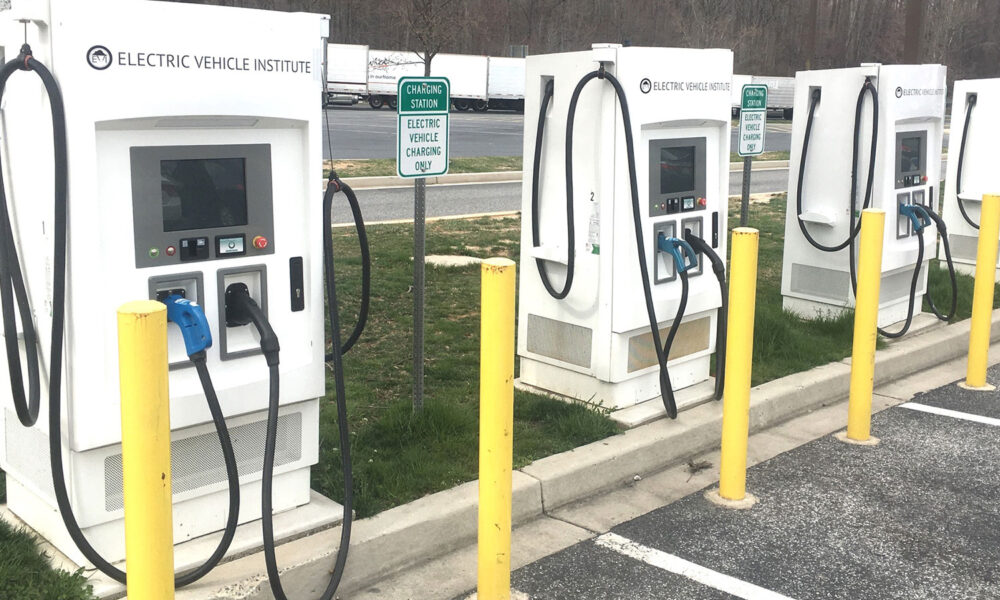As we bid farewell to 2022 and look forward to 2023, I’ve been reflecting on progress made in the past year, particularly in the implementation of the National Electric Vehicle Infrastructure (NEVI) Formula Program. We had a strong start to 2022 when the Department of Transportation’s Federal Highway Administration released guidance to states in February, reflecting many UCS recommendations. The Federal Highway Administration also designated a sixth round of Alternate Fuel Corridors in July, prioritizing more miles of highway on which to prioritize investments in EV charging through the NEVI Program as well as other investments in alternative fueling infrastructure.
Revisiting a blog on state NEVI plans from last August, I was reminded of my concern that some states might not submit their plans on time or at all. Now we know that all 52 NEVI plans—50 states plus DC and Puerto Rico—were submitted and were approved by the Federal Highway Administration. Having all of the plans submitted and all approved is a really significant achievement. Not all of the plans are perfect. Certainly, areas of many state plans could be improved. However, that first round of planning was a really critical step to get all states to take the on-ramp to the NEVI Program. Having an existing plan that is approved gives the states access to the first tranche of formula funds as well as a foundation for planning updates. (States are expected to update their plans every year over the five years of the program.)
One theme to watch in the plans is state request for exceptions to guidance on station spacing, station size, and the like, particularly in states that are not as far along in the transition to EVs. (One notable example in my post on state plans.) I’m not so worried about the exceptions that were granted in the first round of plan approvals if it means the Federal Highway Administration thoughtfully considered states’ unique needs and challenges, especially if the need for exceptions was identified by communities in those states. I’m not suggesting the state plans were rubber stamped, or that they should be in the future. The point is that, overall, it’s important that states got going on program implementation. Moving forward, one thing that gives me a lot of hope, even for states that are not as far along in the EV transition, is thinking about the five-year trajectory of the program period. Just think how far we have come in the last five years: five years ago was January 2018. Thinking of the federal policy landscape, EV model availability, charging availability, and other context of back then, it’s clear we have come a long way.
As far as we have come, there continues to be a tension between getting dollars out the door ASAP to deploy charging to support a rapid transition to decarbonize the transportation sector, on the one hand, and taking time to do it in a beneficial, community-informed way, on the other.
The good news is that we have more resources to move quickly and intentionally than we have ever had before. The Joint Office of Energy and Transportation (Joint Office) is one really significant resource—something we didn’t have back in 2018! That office is providing a wealth of guidance, tools, and technical assistance, which are desperately needed. Based on what I have seen and heard from staff and leadership, the Joint Office in touch with what needs to happen and who needs a seat at the table in the transition to electric transportation, in terms of riding or driving electric. I hope the Joint Office will build on the work it’s already done to do even more to provide support, resources, and best practice sharing, as well as accountability for how NEVI Program investments meet Justice40 targets in a meaningful way. I’m also looking forward to reviewing the final rule on minimum standards and requirements for the NEVI Program as well as more information on the competitive grant program from the Bipartisan Infrastructure Law, which will help deploy charging in communities.
Looking ahead to 2023, to folks reading this, I would say stay engaged. (Or get engaged!) As exciting as it was to have Bipartisan Infrastructure Law passed setting up NEVI and so many other important programs, the work on it is just beginning. As I said before, we have five years of planning and at least five years of building infrastructure ahead of us under the NEVI Program. I know from a recent call with a Midwest coalition that some states are already planning their community outreach and engagement for the next plan update. So, we will need all stakeholders to stay engaged, which may mean different kinds of action on implementation at different levels, including community, state, or federal. UCS will be continuing to explore how to engage at different levels, and work with our members and Science Network to ensure successful and equitable NEVI implementation. I look forward to staying engaged with you.
To hear more reflections on 2022 from me and other EV colleagues, check out this Electrification Coalition webinar recording from last month.

